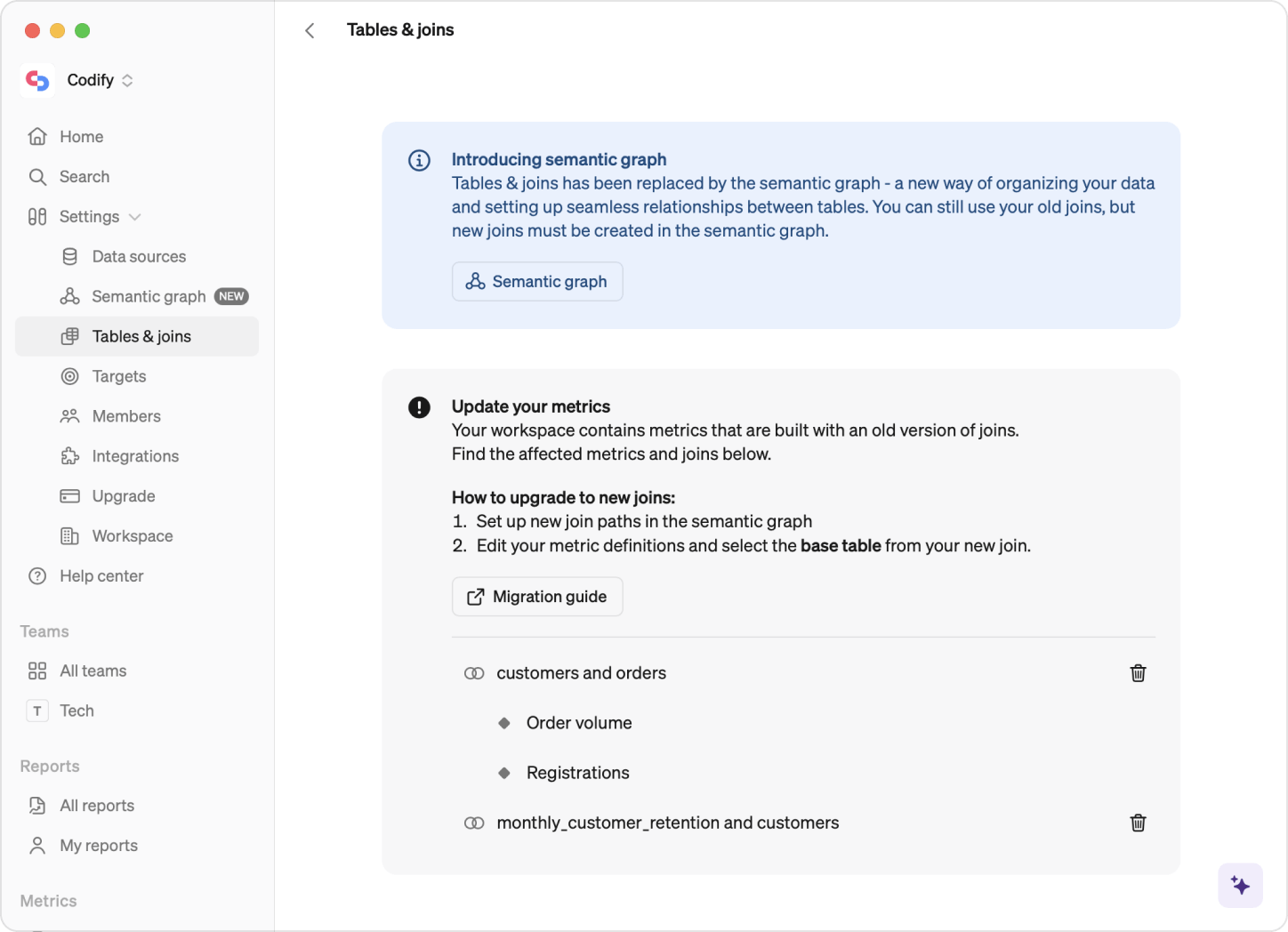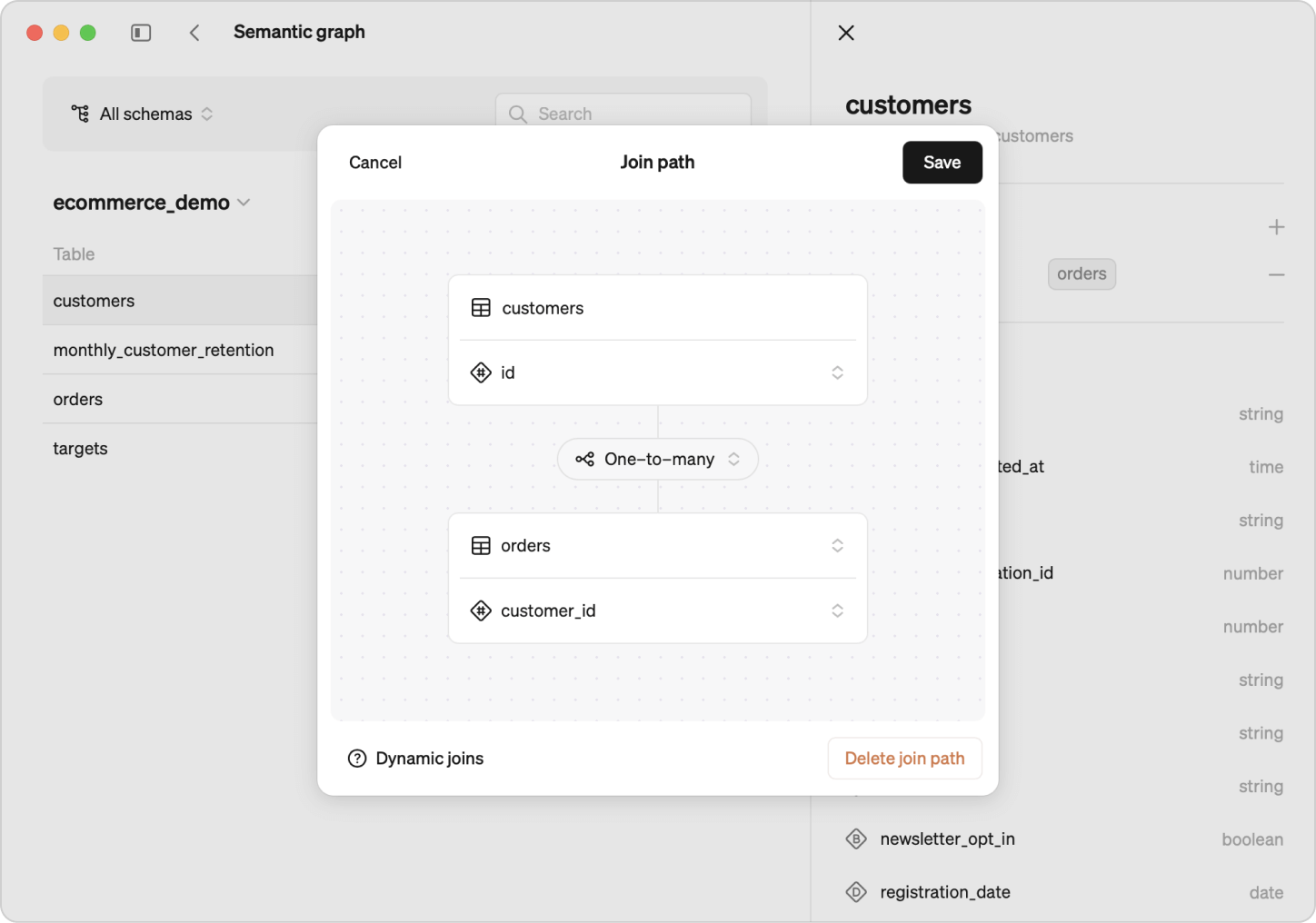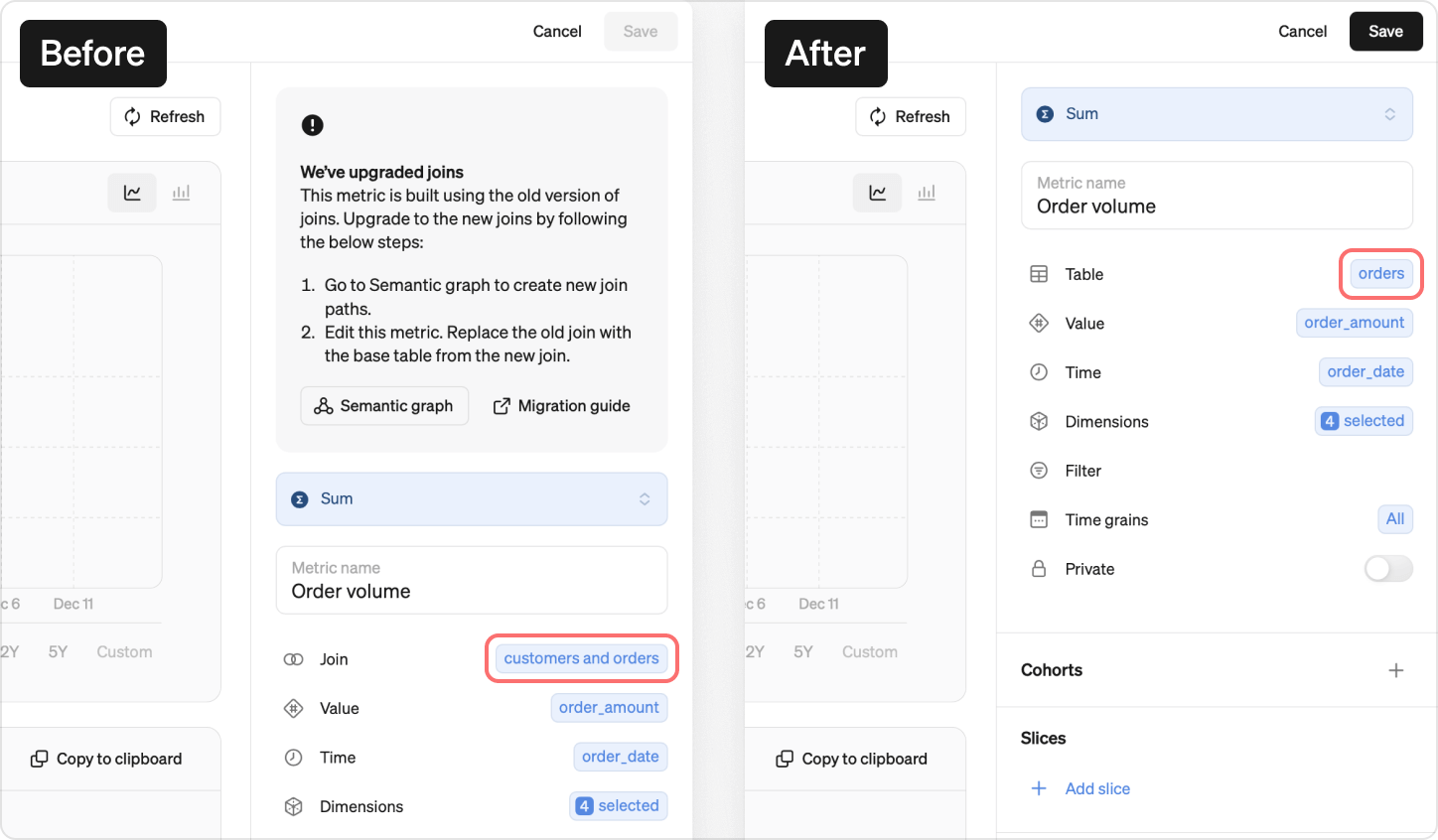Here’s a guide to help you transition smoothly.
Please note
- Immediate action required: On October 19, 2025, support for static joins will end. To ensure your metrics continue working properly, update all metrics defined on static joins before this date.
- Update, don’t replace: We recommend updating your existing metric definitions instead of creating new ones to ensure all your report charts and widgets remain intact.
- Important when migrating ‘joins(inner)’: All new joins are of the type
left join. If you migrate old joins of the typejoin(inner), you may need to add a filter to your metric definition to exclude non-overlapping rows.
Migration steps
1. Identify metrics requiring updates
- Go to Settings → Tables and Joins. Here you will find a list of all old joins and metrics based on them. Use this to prioritize updates.
- Take notes or screenshots of your current metric definitions to assist in validating them after the update.

2. Create new joins
- Go to ‘Settings / Semantic graph’
- Define new join paths that should replace the old ones

3. Update metric definitions
For each metric using an old join
- Update the metric definition by replacing the join with the base table of your new join. Column references will be retained.
- Ensure the logic and relationships are preserved. Any column reference that can no longer be found from the base table will be clearly highlighted.

4. Validate metrics
- Compare metric outputs before and after the update to confirm they match.
- Focus particularly on metrics that previously used inner joins, as they may require adjustments.
5. Complete the migration
- Once you’ve validated your metrics, you’re done!
Need help?
If you encounter issues or have questions, our support team is here to help.